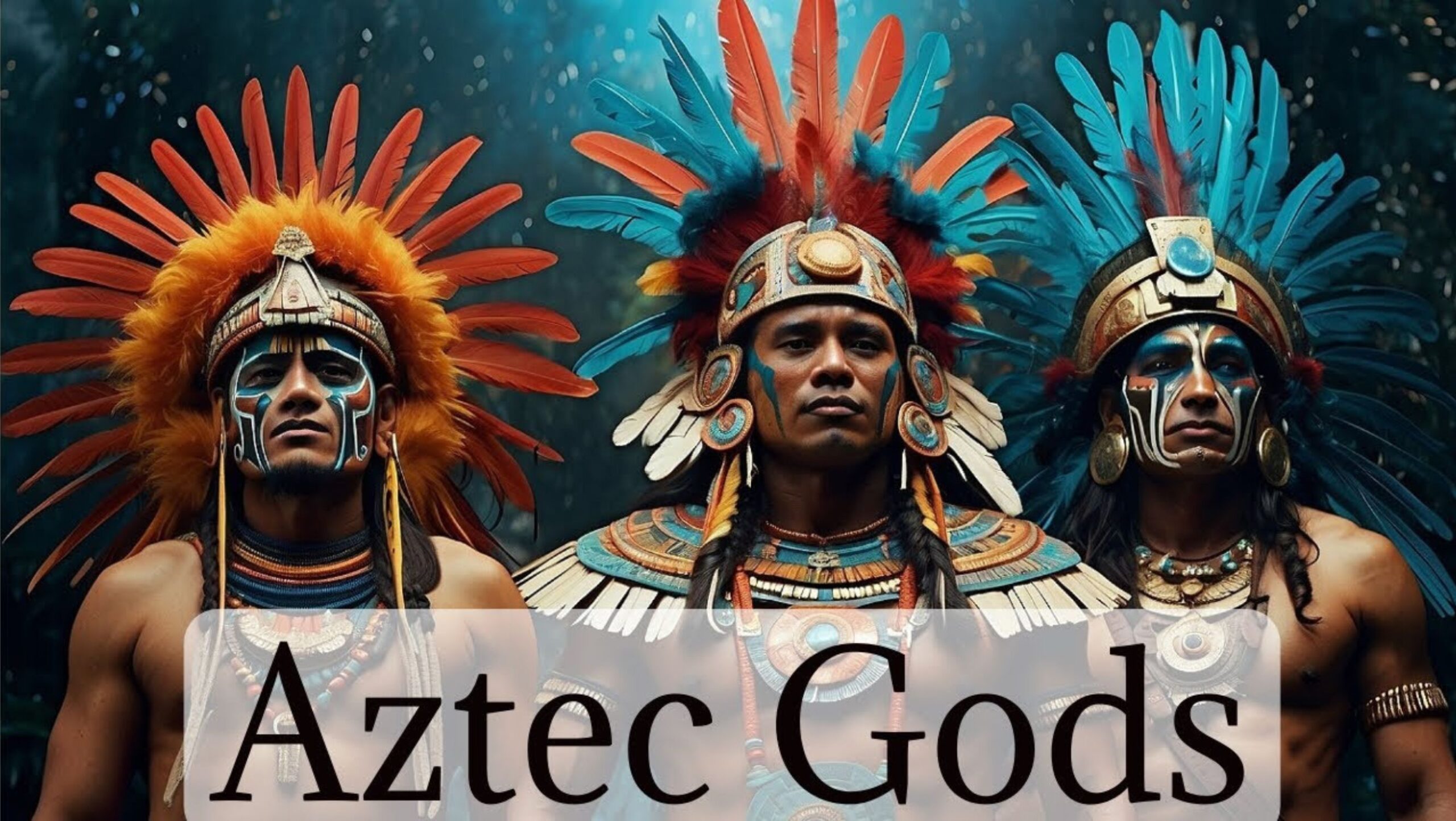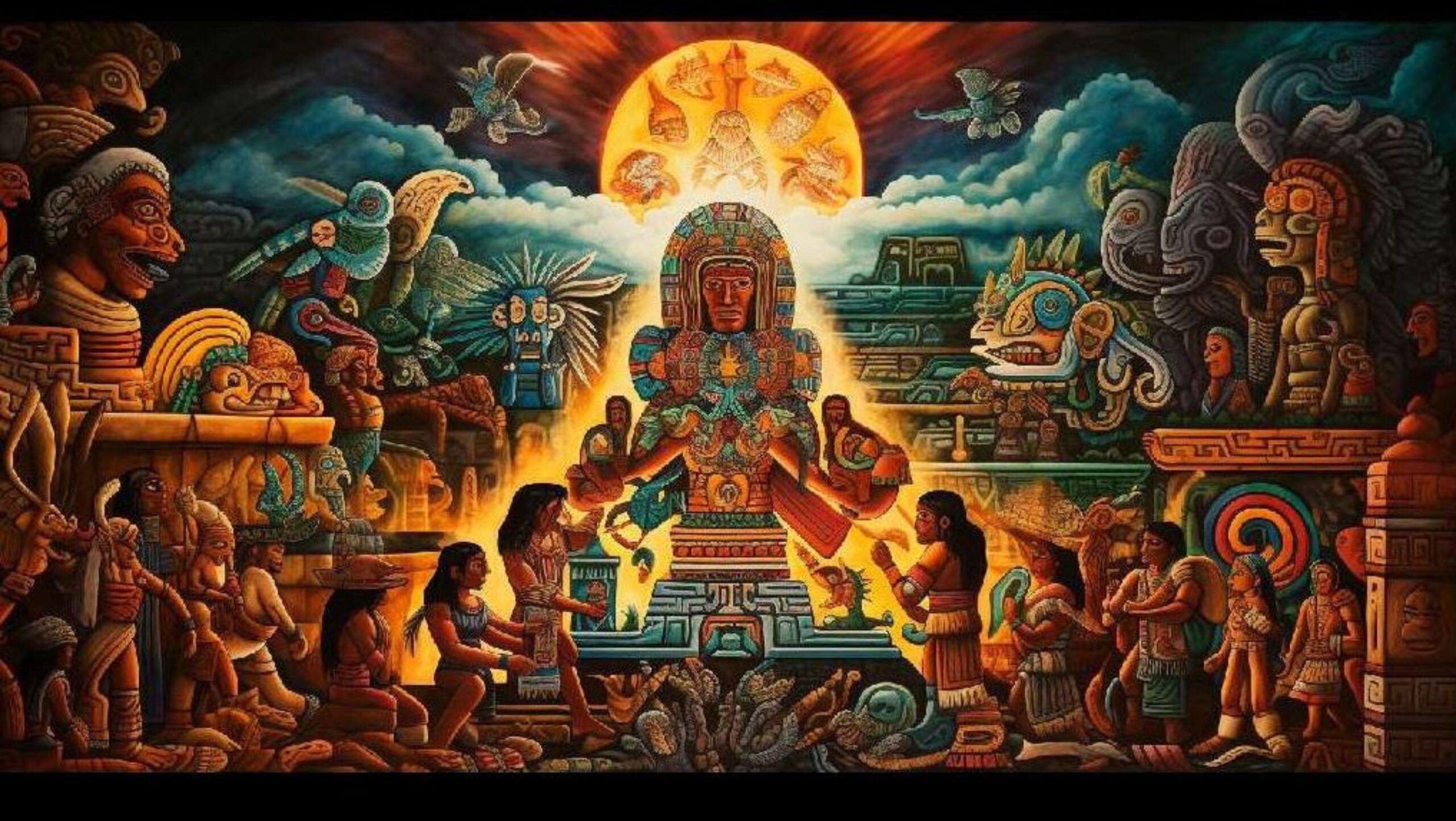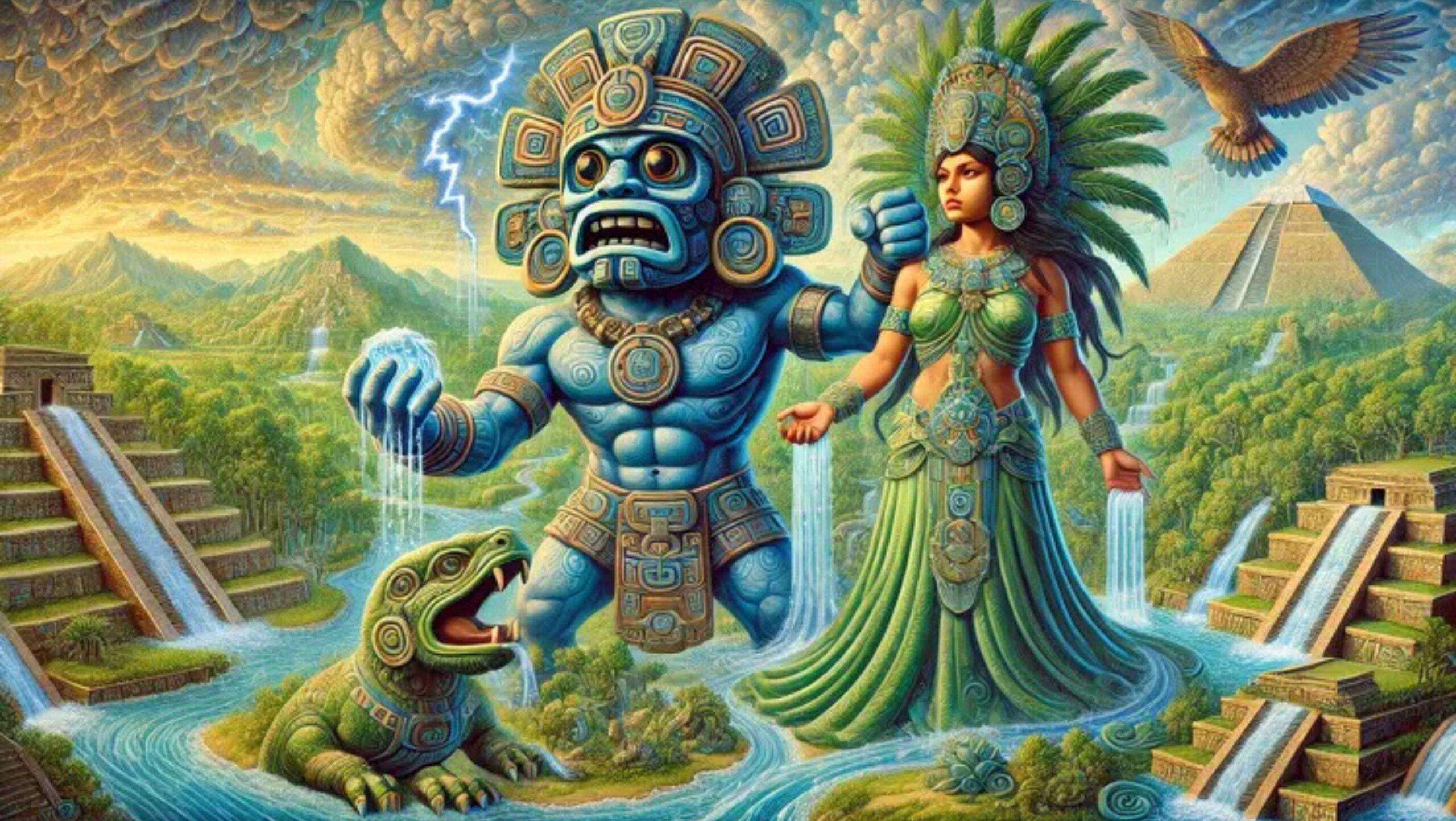Welcome to the fascinating world of Aztec Gods and Mythology! This vibrant belief system was at the heart of Aztec culture, shaping their understanding of the universe. Gods and goddesses played vital roles in everyday life, guiding everything from agriculture to warfare. Myths explained natural phenomena and reinforced social norms, providing a framework for community identity and values. Each deity had a unique influence, impacting rituals and ceremonies that connected the people to the divine. Join us as we explore the rich tapestry of Aztec gods, their stories, and their lasting legacy in the modern world.
The Structure of the Aztec Pantheon: Aztec Gods and Mythology

The Aztec pantheon is diverse, consisting of gods, goddesses, and supernatural beings. Major categories include gods, who often represent fundamental aspects of life, such as creation, war, and agriculture. For example, Huitzilopochtli is the god of war and the sun, while Tlaloc governs rain and fertility. Goddesses like Coatlicue and Xochiquetzal are equally significant, embodying themes of motherhood, beauty, and the earth.
Supernatural beings, such as various spirits and demigods, also play a role in the pantheon. These entities are believed to influence everyday life and natural occurrences. The gods held crucial responsibilities in the cosmos, ensuring balance and order in the universe. They were seen as essential for maintaining agricultural cycles and the well-being of the community.
In society, the Aztecs honored their deities through rituals, offerings, and ceremonies. The gods were not distant figures; they were deeply intertwined with the people’s identity and daily activities. This relationship reinforced social norms and community cohesion, demonstrating the profound impact of mythology on Aztec culture.
Key Aztec Deities: Aztec Gods and Mythology
The Aztec pantheon is rich with important deities, including Huitzilopochtli, Quetzalcoatl, and Tlaloc. Huitzilopochtli is the god of war and the sun, symbolizing strength and victory. He was central to Aztec military culture, and his followers conducted elaborate rituals, including human sacrifices, to ensure his favor during battles.
Quetzalcoatl, known as the Feathered Serpent, represents wisdom, wind, and life. He is associated with creation and the arts, embodying knowledge and civilization. Quetzalcoatl taught the Aztecs about agriculture and the importance of balance in nature. His festivals celebrated life and creativity, showcasing his significance in society.
Tlaloc is the god of rain and fertility. He controls the water necessary for crops and is vital for agriculture. Tlaloc’s worship involved offerings and rituals to ensure rainfall and bountiful harvests. His domain reflects the importance of water in sustaining life and the Aztec economy.
Together, these deities illustrate the complexity of Aztec beliefs, emphasizing their connection to war, wisdom, and nature. Each played a crucial role in shaping the Aztec worldview and cultural practices.
Goddesses in Aztec Mythology: Aztec Gods and Mythology
Aztec mythology includes several important goddesses, each with significant roles in daily life and culture. Coatlicue is the goddess of fertility and the earth. She symbolizes both creation and destruction, embodying the cycle of life. Her influence is crucial in agricultural rituals, as she is revered during planting and harvest seasons.
Xochiquetzal is the goddess of love, beauty, and flowers. She represents arts and crafts, celebrating the joy of life and human relationships. Festivals dedicated to Xochiquetzal often feature music, dance, and floral offerings, emphasizing her importance in promoting harmony and creativity. Her worship reflects the Aztec appreciation for beauty in both nature and human expression.
Chicomecoatl, the goddess of agriculture and sustenance, oversees crop growth and food production. She ensures the fertility of the land and the well-being of the community. Chicomecoatl’s influence is evident in farming practices and harvest celebrations. The Aztecs honored her with rituals that sought her blessings for abundant yields, highlighting her essential role in their survival and prosperity.
Creation Myths and Cosmology: Aztec Gods and Mythology
Aztec creation myths explain the origins of the world and humanity. One prominent story involves Tezcatlipoca and Quetzalcoatl, two gods who created the Earth from the remnants of previous worlds. They molded humans from corn, a sacred plant, emphasizing its importance in Aztec culture. These myths reflect the deep connection between the gods, nature, and human existence.
The Aztecs believed in the concept of cycles, viewing time as a series of epochs. They identified Four Suns, each representing a different era of creation. The first Sun was made of water and ended in a great flood. The second was composed of wind, which resulted in a destructive storm. The third Sun was made of fire, leading to a catastrophic blaze. Finally, the current Sun, created from earth, is prophesied to end in a final destruction.
These creation stories highlight the cyclical nature of life and the importance of renewal in Aztec cosmology. The belief in cycles reflects their understanding of existence, where life, death, and rebirth are interconnected. Such myths shaped their worldview and influenced their rituals and societal norms. Aztec Gods and Mythology
Rituals and Worship: Aztec Gods and Mythology

Rituals and worship were essential aspects of Aztec life, deeply intertwined with their religion. These practices included ceremonies to honor their gods, aimed at ensuring balance in the cosmos. Major events featured music, dance, and vibrant costumes, fostering community involvement in spiritual life. Temples served as the main sites for these rituals, where priests performed sacred rites.
Offerings played a crucial role in Aztec worship. The Aztecs believed that their gods required sustenance to maintain favor and support. Common offerings included food, flowers, incense, and precious items like jade and gold. These offerings expressed gratitude and devotion, reinforcing the relationship between the divine and the people.
Human sacrifice was the most significant aspect of their religious practices. The Aztecs believed that offering human lives was necessary to repay the gods for creating humanity. This ritual was seen as a way to nourish the gods and ensure agricultural fertility and protection in warfare. While it seems brutal by modern standards, these sacrifices were integral to their worldview and cultural identity, reflecting their understanding of life, death, and cosmic balance.
Symbols and Iconography: Aztec Gods and Mythology
Aztec mythology is rich with symbols that represent their gods and beliefs. Common symbols include the serpent, which often signifies fertility and the earth, and eagles, representing strength and courage. The coyote symbolizes cunning and adaptability, while the jaguar reflects power and the underworld. Each symbol carries deep meanings and is integral to Aztec culture. Aztec Gods and Mythology
Artistic representations in codices and artifacts provide insights into Aztec religion and society. Codices often depict gods, rituals, and important events, using vibrant colors and intricate designs. For instance, Huitzilopochtli, the god of war, is commonly illustrated with a hummingbird, symbolizing his fierce nature and connection to the sun.
Artifacts, such as sculptures and pottery, also showcase religious symbols. These items often feature motifs like feathers, which symbolize divinity and the heavens. The use of these symbols in everyday objects reflects the importance of spirituality in Aztec life. Together, symbols and iconography serve as a visual language, conveying complex ideas about the gods and the cosmos to those who encountered them.
The Role of Mythology in Aztec Society: Aztec Gods and Mythology
Mythology was foundational to the structure of Aztec society. The gods were central figures, influencing governance and social hierarchy. Rulers often claimed descent from deities, which legitimized their authority and reinforced their power. This divine connection was vital for maintaining order and obedience among the populace.
Myths also served as tools for cultural cohesion and identity. Shared stories about creation and the pantheon fostered a sense of belonging among the diverse groups within the Aztec Empire. Festivals that celebrated these myths encouraged communal participation, strengthening social bonds. Through these events, the Aztecs reinforced their collective identity and cultural heritage.
Moreover, mythology shaped social norms and values. Stories often highlighted virtues like bravery, sacrifice, and loyalty. These narratives instilled ideals that guided behavior and expectations, especially in warfare and community responsibilities. Overall, mythology was more than just belief; it was a framework that unified and defined Aztec society, influencing every aspect of life from governance to daily interactions.
Influence of Aztec Mythology on Modern Culture

Aztec mythology continues to hold significance in contemporary Mexican culture. Many traditional beliefs and practices trace their roots to these ancient stories. Elements of Aztec mythology can be seen in festivals, which often celebrate agricultural cycles and honor deities like Tlaloc, the rain god. These celebrations connect modern Mexicans to their ancestral heritage.
Literature and art also reflect the influence of Aztec mythology. Authors and artists frequently draw on mythological themes, weaving them into contemporary narratives and visual expressions. Books, poetry, and murals depict Aztec gods and legends, helping to preserve these stories for future generations. This artistic representation fosters a sense of identity and continuity in Mexican culture.
Festivals like Día de los Muertos (Day of the Dead) echo Aztec beliefs about life and death. This celebration honors deceased loved ones and reflects the importance of memory in Aztec tradition. Overall, the influence of Aztec mythology is evident in various aspects of modern culture, emphasizing its lasting impact and relevance. Through these connections, the rich heritage of the Aztec civilization continues to inspire and shape Mexican identity today.
Conclusion: Aztec Gods and Mythology
The legacy of Aztec gods continues to resonate in modern culture, shaping identity and beliefs. Their stories provide insight into the values and traditions of ancient Mesoamerican civilization. This enduring impact highlights the need to preserve these myths for future generations. By keeping these narratives alive, we ensure that the rich cultural heritage of the Aztecs remains accessible, fostering appreciation and understanding. As we explore these ancient tales, we connect with a profound history that influences contemporary life and enriches our global narrative. Preserving this mythology is essential for honoring the past and inspiring future storytelling.
FAQs
What are the main creation myths in Aztec mythology?
Aztec creation myths often involve cycles of creation and destruction, most notably the story of the Five Suns. Each Sun represents a different era, with the current one, the Fifth Sun, believed to be destined for destruction.
How did Aztecs view the relationship between gods and humans?
The Aztecs believed in a reciprocal relationship with their gods. Humans provided offerings and sacrifices to gain favor and ensure the gods’ support for agricultural and societal prosperity.
What role did festivals play in Aztec religion?
Festivals were crucial in Aztec society, celebrating various deities and agricultural cycles. These events involved rituals, music, dance, and feasting, reinforcing community bonds and cultural identity.
How did Aztec mythology influence their art and architecture?
Their mythology deeply inspired Aztec art and architecture. Temples and sculptures often depicted gods and mythological scenes, serving religious and political purposes to convey power and devotion.
Are there modern interpretations of Aztec mythology?
Yes, many contemporary artists, writers, and filmmakers draw inspiration from Aztec mythology. This revitalization helps keep the stories relevant, exploring themes of identity, culture, and spirituality in today’s context.

